What Is The Product Development Life Cycle?
The product development life cycle is a critical process that every startup or business must follow to develop a successful product. It’s challenging to generate an idea and create something out of it, let alone launch it successfully. Fortunately, this structured process allows teams to visualise their work better and develop a product that resonates well with the customers.
In this article, we’ll closely examine what the product development life cycle is. We’ll also review some important topics like its stages, models, and challenges you’ll likely meet along the way. Ultimately, you’ll understand its importance and how businesses can leverage it to bring new ideas into the market.
Table of Contents
What is the product development life cycle?
The product development life cycle (PDLC) describes the framework that outlines the stages a product goes through during its development. It’s designed to minimise risks and increase the likelihood of the product’s success in the market. Cross-functional teams within the company, such as product managers, developers, designers, and QA testers. They will work together to create a valuable product.
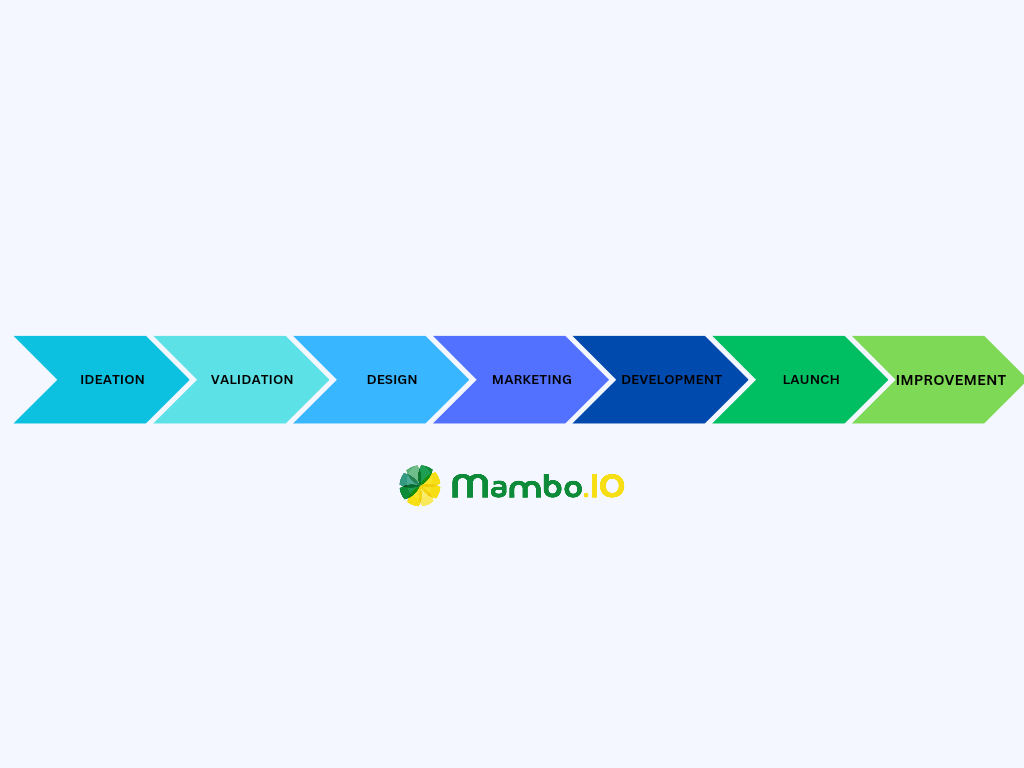
Understanding and adhering to this framework is necessary for effective product management. Additionally, it ensures that the company’s products remain competitive throughout their life cycle. Ultimately, this framework ensures the product development team delivers value to end users before their products become obsolete.
Stages of product development life cycle
There is no universal definition of a product development life cycle. However, companies and businesses follow the same steps to ensure good results throughout product development and beyond. Regardless, organisations need to focus on user-centred operations to deliver a minimum viable product (MVP), solicit customer feedback, and generate revenue rapidly.
With that said, here are the seven stages of the product development cycle. These stages aren’t always linear, and product managers may move back and forth between stages as the product evolves.
#1. Ideation
The first stage of the product development cycle is ideation. This involves generating or discovering new ideas and identifying potential problems to solve or opportunities to grab. This can be a challenging phase for product managers. However, there are strategies and frameworks they can use to help jumpstart the process and foster creativity, like the SCAMPER technique.
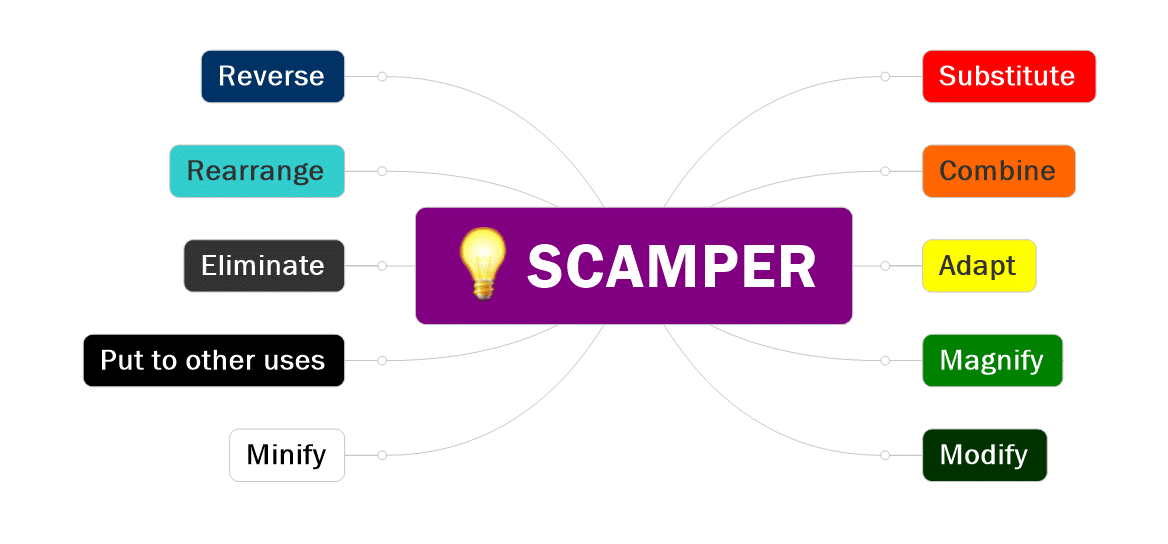
Source: BBN Times
During this stage, it’s essential to refrain from evaluating the feasibility of ideas early on. This is not the time for rigidness; instead, let the creativity flow freely without being hindered by unnecessary and premature judgements. Such an approach promotes innovative thinking and exploring unconventional ideas.
#2. Validation
The next step is the validation stage, which is crucial to determine which concepts are worth pursuing and which should be discarded. Product managers must go deep into market research to assess the potential market for the company’s products.
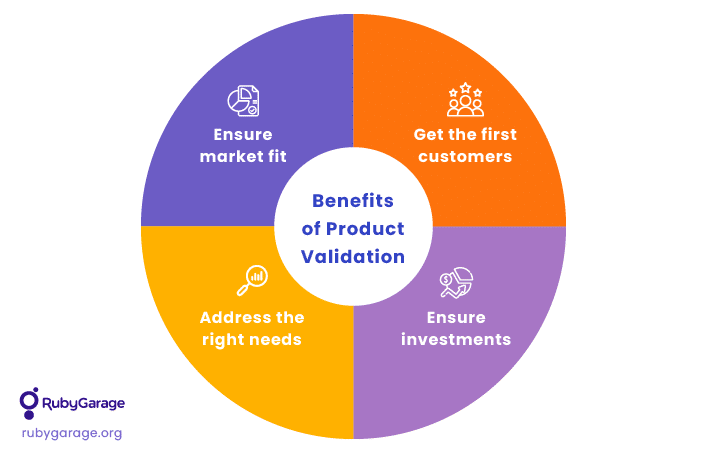
Source: Ruby Garage
The goal is to select the most promising ideas and discard the less plausible ones. After validating the ideas, product managers should start engaging potential customers, identifying their pain points and how the product can solve them. Additionally, they must gather other crucial information from the customers. We’re talking about how much they are willing to pay, the likelihood of using the product, and what features they are looking for.
#3. Design
Once the product manager settles on the final idea, they can start the design stage. During this stage, they will translate the concept into a tangible design which they can use to develop a physical product. The primary goal is to create a feasible product design that meets the customer’s needs and wants.
Here are some of the critical activities that take place during this stage:
Defining product specifications
This process involves creating a detailed document containing the product’s design, features, materials, and manufacturing process. Product specifications are crucial because they are the blueprint for the product development team, ensuring everyone is working towards the same goal.
Conceptualising the design
It is the process where the design team will develop several design options, all meeting the product specifications. The team will then evaluate each design option and pick the best one. The final design must meet the customer’s needs, be feasible to produce, and align with the company’s branding.
Developing prototypes
After selecting the design, the team will proceed with product prototyping to ensure the product is functional, usable, and durable. The prototype can be a physical model or a digital product simulation, depending on the company and industry. More importantly, the prototype will help the team visualise the product and spot any possible issues or improvements.
Testing and refining the design
This process involves evaluating the finished prototypes and making necessary adjustments to the design. The prototypes will gather stakeholders’ feedback and ensure the product is aligned with the customer’s wants and the company’s business goals. This process allows the team to conduct user testing and gather feedback from customers and stakeholders to ensure product design meets preferences.
#4. Marketing
Once the prototype is ready, it’s now time for the team to create a go-to-market strategy and spread the message. The product manager can start by identifying their target audience, creating personas, and analysing potential competitors. Product managers can create personas to understand better their customer’s behaviour, responsibilities, and pain points.

Source: Start Infinity
To ensure the product resonates with the audience, the marketing team must empathise with previous user interviews to address their unique needs and pain points. They’ll also need to determine the most effective channel to fill your sales funnels, such as paid advertising, social media, or blogging. They can establish key performance indicators (KPIs) for each channel to track progress and optimise market research accordingly.
#5. Development
Once your marketing campaign gains traction, you can develop your minimum viable product. The goal in this stage is not to produce a full-featured product immediately but rather to enter the market as soon as possible. Remember, minimum viable products don’t have to be launch-ready. They only need to have enough rudimentary features so stakeholders and consumers can have something to scrutinise and provide helpful feedback.
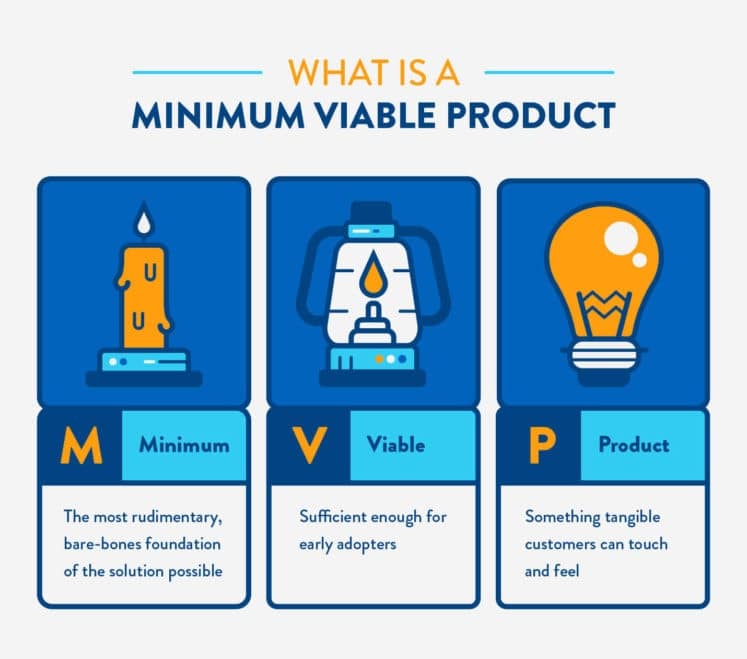
Source: DesignModo
The product development stage is the perfect time to lay down the product’s roadmap and discuss how the team will implement it. The team must come together for MVP planning, including strategizing for sprints, dependencies, third-party integrations, and more. Most importantly, this planning must include an estimate and a development timeline to allocate resources correctly.
This stage can be cumbersome, so product managers are urged to set a target deadline for their MVPs. As a product manager, you can break down the development stage into smaller, more manageable tasks. Doing so can help you track the product’s progress, ensuring everything is sailing smoothly, according to plan and schedule. This stage can be cumbersome, so product managers are urged to set a target deadline for their MVPs.
#6. Launch
Before the public launch, you must ensure everything is set in place. This is the best time for product managers to scrutinise every nook and cranny of their product. To help you with this, you can test your product for bugs, finalise integrations, implement user-tracking and analytics, and more.
While at it, ensure you’ve finalised all your marketing efforts. In the weeks leading up to the launch, you should devise an excellent delivery plan to build the hype train and excite the public. Take inspiration from how Steve Jobs, the former CEO of Apple, conducted his company’s product launches. He has mastered product launches because he never failed to establish a personal connection between them and the then-released gadgets.
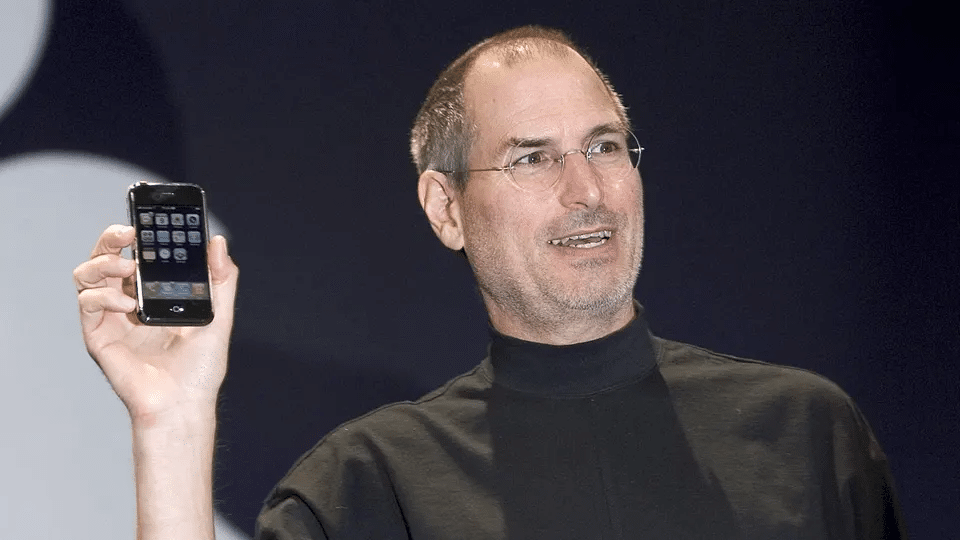
Source: Forbes
Once the launch day comes, step back and let your product do all the talking. Revel in the sense of accomplishment you and your team have done to make the product possible. However, don’t get caught up in the buzz just yet! Launch day can feel electrifying, but it’s only the beginning of a never-ending process in which all product teams must participate.
#6. Improvement
Welcome to the product development life cycle that never ends. The work doesn’t stop with the product launch, and it’s up to you and your team to determine your product’s flaws and improve upon them. This is the best time to observe, think fast, and act more quickly. The product is now out in public and is directly exposed to your target audience. Take this as a golden opportunity to identify possible areas of improvement to satisfy your customers’ wants and needs better.
You can leverage customer feedback during the improvement stage to drive lifetime value. Some of the best data sources include NPS surveys, churn surveys, usage reports, conversion rates, etc. The insights from these data can help any product manager pinpoint the product’s specific features and functionalities that need addressing.
Additionally, product managers can take this opportunity to level up their products. The insights from the customers can help you identify promising areas of improvement that can be leveraged to satiate your customer’s needs. Additionally, product managers can take this opportunity to level up their products. ter. Listen closely to your customers, fulfil their needs, and your product will stay relevant and ahead of the competitors.
PDLC vs. SDLC: what’s the difference?
The terms PDLC and SDLC are often used interchangeably in the product development field. Both being equally important, these terms share similarities, but each represents a different set of concepts within the realm of product development methodologies.
The product development life cycle (PDLC) encompasses the entire development process involved whenever a company brings a new product to the market. It usually involves a holistic approach covering crucial aspects of the product development process, such as market analysis, product strategy, and customer feedback.
On the other hand, the software development life cycle (SDLC) is a subset of PDLC that focuses on developing software applications. It represents the step-by-step process software development teams follow to create, enhance, and maintain software systems. The methodologies used in SDLC vary, with popular approaches including agile, waterfall, and other models, which we’ll discuss later.
Much like PDLC, SDLC follows different life cycle stages, such as:
- Requirements & analysis
- Project planning
- Design
- Coding & implementation
- Testing
- Deployment
- Maintenance
It’s important to understand that PDLC and SDLC are interconnected and influence each other. For example, product strategy decisions made during the PDLC phase can affect the methodology employed during the SDLC phase.
Common product development life cycle models
Several life cycle models are widely used to guide the systematic and structured approach to bringing a new product from idea to market. These models provide a framework for organisations to follow, ensuring that each stage of the product development process is appropriately addressed.
Let’s explore some of the most popular product development life cycle models:
#1. Waterfall model
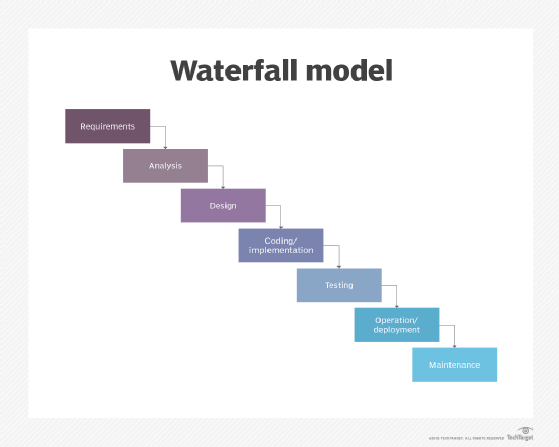
Source: TechTarget
This is a linear and sequential approach where each phase flows in a strict, downward sequence – like a waterfall. This model usually consists of stages from requirements gathering to deployment and maintenance. It should be noted that the Waterfall model offers clarity and progression of tasks, but it lacks the flexibility for changing needs.
#2. Agile model
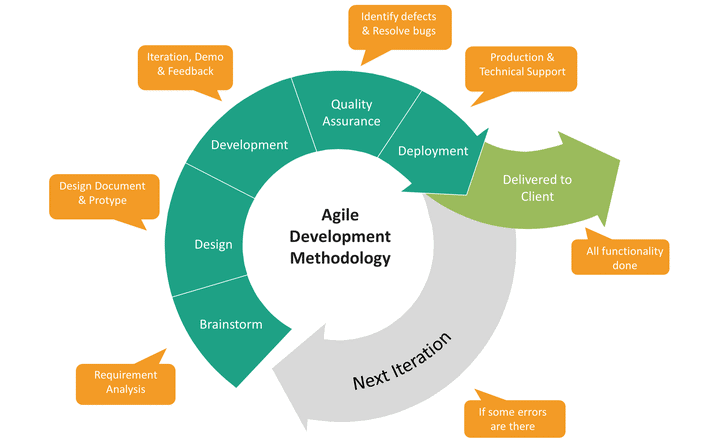
Source: LinkedIn
Unlike the previous methodology, the Agile model emphasises flexibility and iterative development. It embraces collaboration, adaptability, and quick response to change. Instead of working on the entire project simultaneously, the Agile model divides the work into smaller, more manageable increments called sprints. This method allows for continuous feedback and improvement but can be less predictable and requires more time and commitment for everyone involved.
#3. Spiral model

Source: Airbrake.io
The Spiral model is a hybrid combining the elements of the Waterfall and Agile models. The process starts with an initial planning phase, followed by multiple development, testing, and evaluation iterations. The product evolves and grows with each iteration based on feedback and insights from previous stages. This model is ideal for highly-complex products that come with potential risks.
#4. V-Model
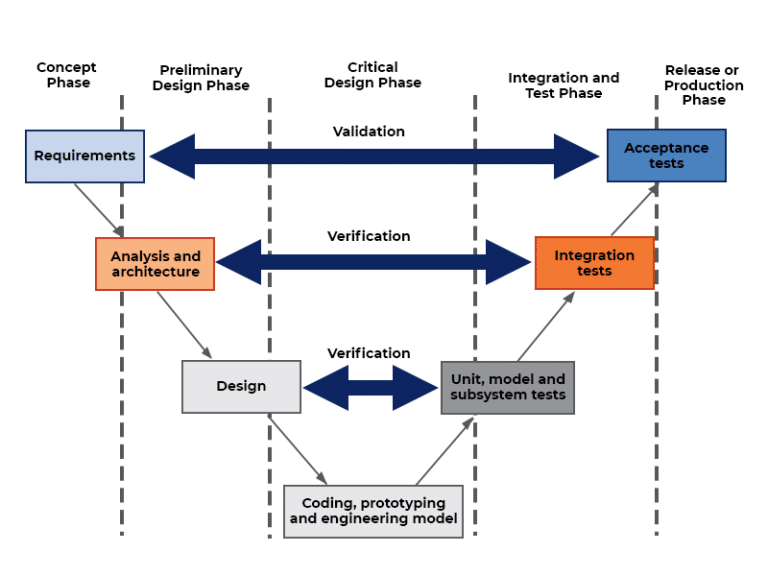
Source: Krusche Company
The V-model extends the Waterfall model but focuses more on testing and verification. This model ensures that testing activities are integrated early in development to reduce the likelihood of major product defects. It is an ideal model for product managers who want a structured approach to their quality assurance and validation processes.
#5. Lean startup model
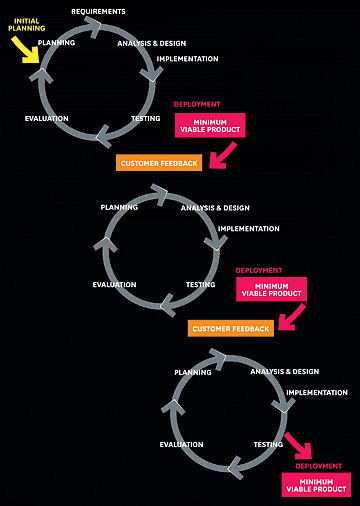
Source: Harvard Business Review
As the name suggests, the lean startup model is designed for startups and entrepreneurial ventures. It focuses on rapid prototyping, experimentation, and validated learning. This approach requires a minimum viable product continuously subject to iterative improvement based on customer feedback. The lean startup model is ideal for product managers who aim to minimise resource waste and optimise product-market fit.
Product life cycle vs. product development life cycle: what’s the difference?
Product life cycle (PLC) is another term that confuses to be the same as product development life cycle. They sound almost the same, but they represent distinct concepts that refer to the different phases and aspects of a product’s journey.
The product development life cycle (PDLC) revolves around the processes involved in the “development” of the product.
Product life cycle (PLC), on the other hand, represents the “life cycle” of the product itself. It encompasses the product’s lifetime, from introduction to the market to its eventual decline and discontinuation.
It is a concept used to understand the various phases of a product’s market performance. It also helps businesses make data-driven decisions regarding marketing campaigns, sales, and product strategies.
Here are the different life cycle stages of a product:
#1. Development
In this phase, the organisation huddles with its best to establish a development strategy and create prototypes to bring in investors. Not only that, but this phase also revolves around product testing, validation, marketing, and coming up with an effective launch strategy. This phase can last for an indefinite period, and it’s common for companies to dish out massive amounts of money without getting any revenue because there’s still no product to be sold.
#2. Introduction
The introduction phase is when a newly-developed product enters the marketplace. The primary objective of organisations in this stage is to build awareness and generate interest among their potential customers. Customers may not know the product initially, so companies are doubling down on their marketing efforts. Doing so allows its products to be more visible and communicate its value proposition better to its audience.
#3. Growth
The growth phase starts once the product experiences a rapid increase in demand. This can be due to numerous factors, such as positive customer feedback, impactful marketing efforts, etc. Moreover, this is also when your competitors will see your product’s success, so expect them to be more aggressive with their campaigns.
#4. Maturity
The excitement around the product will eventually simmer down and reach a peak level of market penetration. This starts the maturity phase when product sales stabilise, and competition intensifies. During this stage, it’s common for companies to innovate their solutions or adjust their pricing strategies to maintain an ideal market share.
#5. Saturation
The time will come when the market will get saturated by the same products, and companies will struggle to make their specific products stay afloat in the competition. This is the saturation phase when customers use a particular product many competing companies offer. The market is oversaturated, and this is the best time to ensure that your product is your customer’s brand preference so it won’t suffer a decline.
#6 Decline
A product will enter the decline phase once market saturation happens or if the preference of its customers shifts. This can also happen when new groundbreaking technologies emerge. During this phase, the product will struggle to stay relevant. Sales will decline, and companies must consider discontinuing or diversifying the product to mitigate losses.
Best product lifecycle management software to use
Product life cycle management (PLM) is another crucial aspect of product development, requiring time and effort. Any product manager attempting to improve the quality of their product throughout its life cycle will find specific software beneficial. Here are three of the best product life cycle management software product managers use today.
#1. Wrike
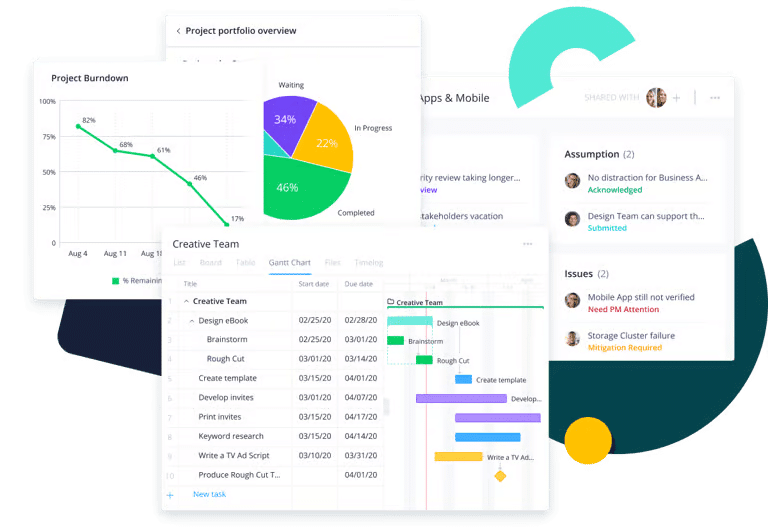
Source: Wrike
Wrike is a PLM software focused on collaboration and project management. It is arguably one of the best PLM software because of its dashboards and data visualisations. It aids product managers in managing their product’s life cycles by providing a single platform where the team can collaborate. It has helpful product management features that monitor the product’s health throughout its life cycle.
#2. Productboard
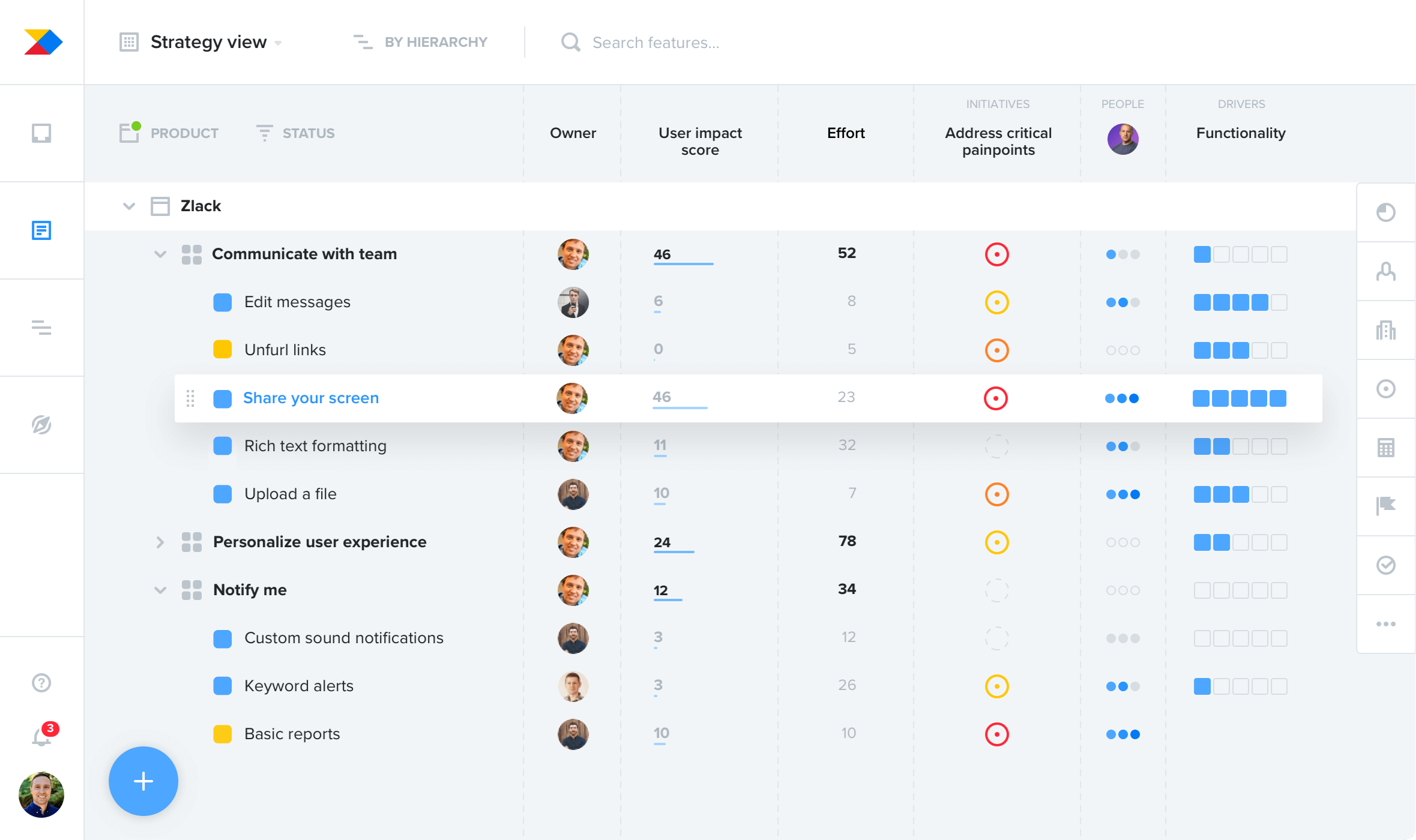
Source: Productboard
Productboard is a powerful product management solution that gives product teams valuable insights into their customers’ pain points. It helps users identify promising features to focus on, allowing everyone involved to collaborate with the product roadmap. Productboard is robust software trusted by many renowned companies in the digital industry, such as Zoom, Zendesk, and Avast.
#3. ClickUp
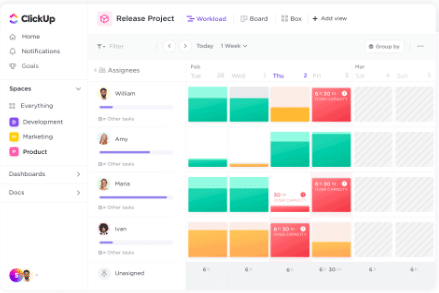
Source: ClickUp
ClickUp is an affordable all-in-one PLM software that eliminates the need to work in silos. With this software, teams can easily collaborate and work on their product thanks to its features. Some of the broad features this software offers include task lists, in-app chat, and goal-tracking, to name a few. ClickUp is the preferred choice of thousands of product teams worldwide, including Samsung and IBM.
Challenges in the product development life cycle
Managing the product development life cycle is not an easy feat. There are tons of things that could go wrong at any stage, and there are plenty of unexpected factors that may disrupt the product’s life cycle. It’s important to understand that most of these issues reside outside your sphere of control. However, these challenges are even more dangerous for the product’s development life cycle.
Here are some challenges most product teams encounter throughout the product development life cycle stages.
- Internal factors, such as lack or poor allocation of resources or a vague and incoherent product roadmap.
- External factors include new market competitors or a significant customer preference shift.
- Economic conditions, like a recession and changes in price trends.
- Technological breakthroughs force some products to decline and become obsolete.
- Regulatory and legal issues, like a product recall, give the brand a bad reputation amongst its customer base.
Final thoughts
The product development life cycle is a continuous process that knows no bounds. After the launch, your customers will continue to interact with your product, allowing you the chance to observe and take down notes. Use this opportunity to observe how they engage with your product to increase customer lifetime value. Ultimately, use the data you’ve gathered to make improvements or add new features to your product.
The product development life cycle is a crucial process that determines the success of any product in the long run. One of the best ways to guarantee a product’s success is to ensure high user engagement. At Mambo.io, we help product managers improve their digital product’s user engagement through gamification. Contact us today and schedule a free demo to discover the power of gamification and how it can enhance your customer’s loyalty towards your brand and product!
Download your free
“Gamification Guide”
Get your PDF now and start transforming your approach to digital engagement!
Latest Posts
Machine Learning In Finance: 12 Essential Applications
The impact of machine learning on finance is significant. Thanks to this technology, financial institutions are now equipped to make efficient decisions. Through the analysis of data sets, machine learning […]
How To Create Interactive Compliance Training For Bank Employees
Banking compliance training isn’t just another task. It’s the stage where everything else performs. Banks must navigate a myriad of regulations and laws. After all, this is a trust-driven, high-stakes […]
How Fintech Apps Are Using Gamification To Increase User Engagement
Discover how gamification in fintech is revolutionizing financial engagement, making banking fun & boosting user loyalty.





